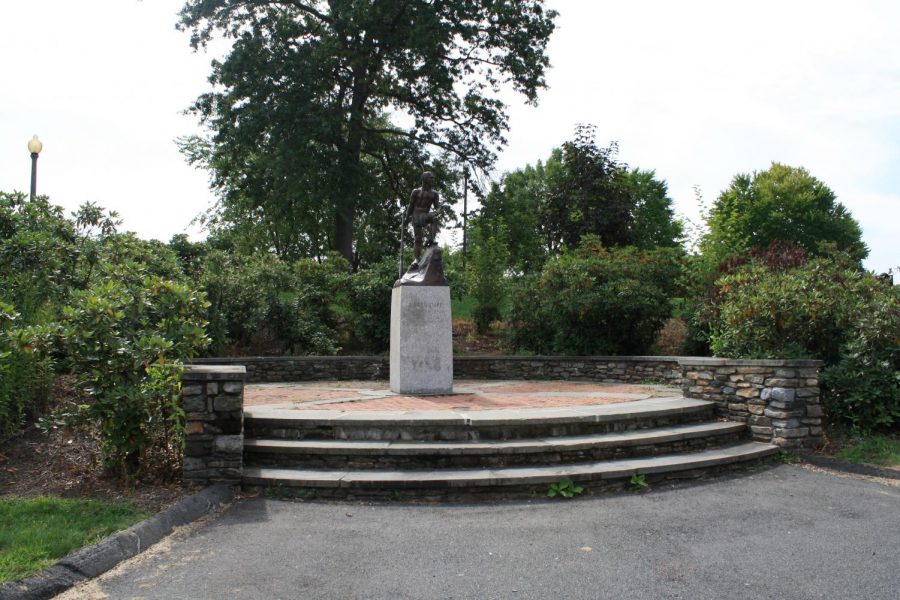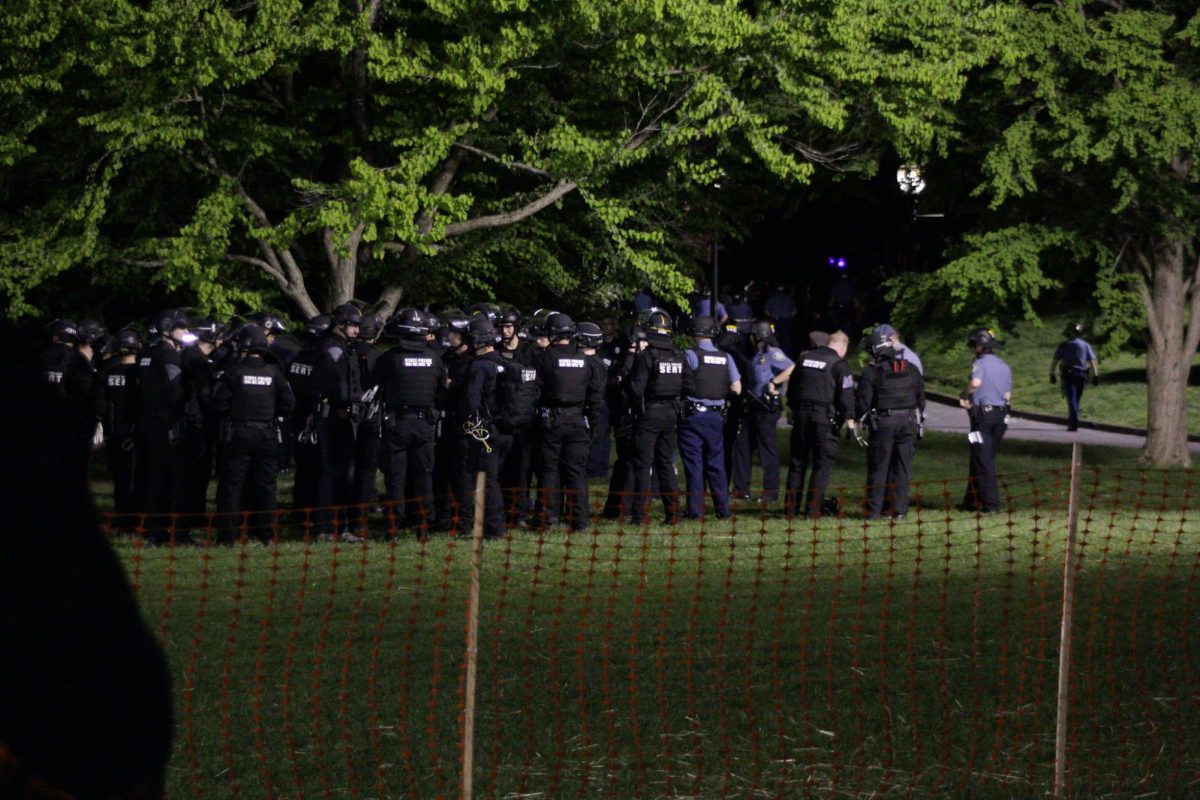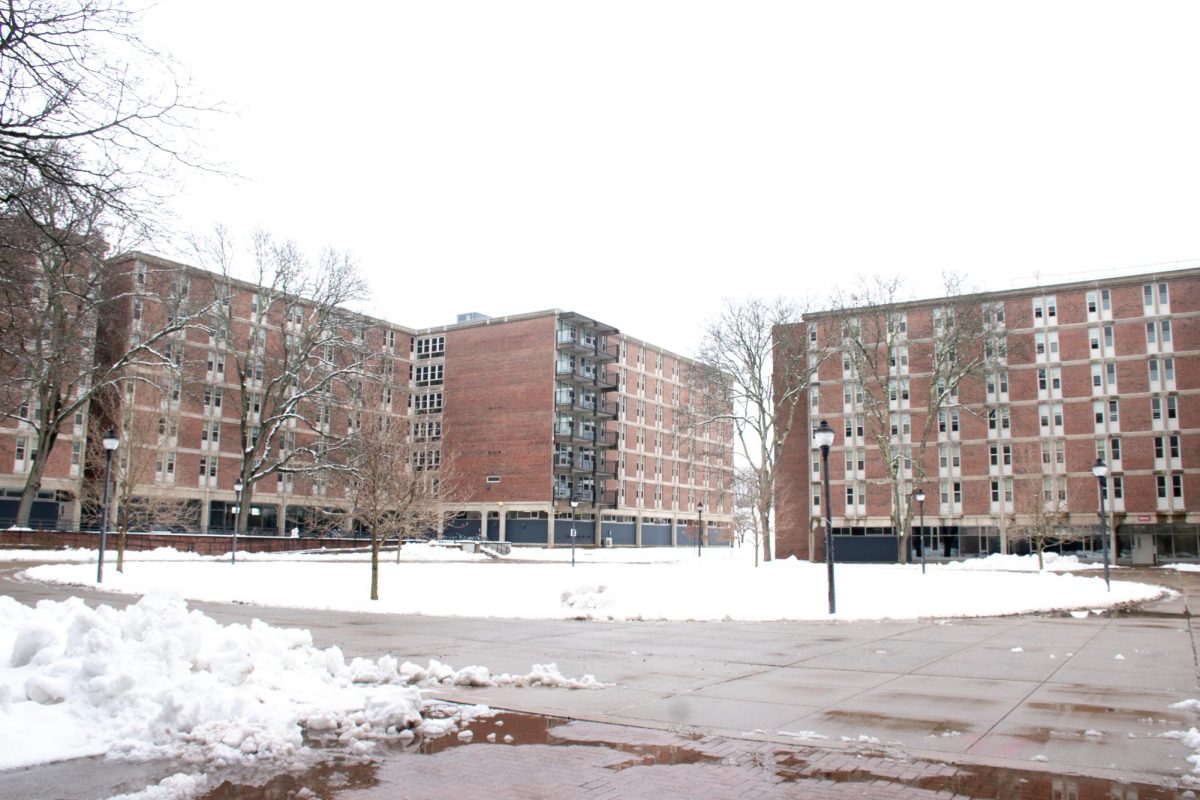Shortly after my arrival at the University of Massachusetts, I walked around campus to explore. I was walking out of the Campus Center when I overheard the people in front of me discussing a statue. I stopped to look at the figure, which portrayed an Indigenous man in a traditional headdress, wielding a rifle. The inscription on the base read “Metawampe” and directly under that “The legendary spirit of the Redmen.” After researching Metawampe and the history of the University’s relations with native people, I learned the offensive engraving on the statue was not an isolated incident. The engraving ties into a history wrought with anti-Indigenous mindsets and behaviors.
The legend of Metawampe goes like this: Metawampe was the chief of the Nonotuck tribe who, in 1647, sold the land that is now Hadley and Amherst to British settlers. Since the University’s creation, Chief Metawampe has been a legendary icon for the school. This story may sound nice but it is completely fabricated and is in no way what actually happened. Historians have found no evidence that Chief Metawampe really existed, nor that the Nonotuk tribe even used the name Metawampe.
The legend of Metawampe, more likely than not, was made up by the white man to ease the discomfort of white people. This story paints a picture of a generous native chief who sold land to the poor British settlers just because they asked nicely. The truth is that the land the university is built on is stolen and fertilized through decades of massacres and violence. The legend of Metawampe does not exist to memorialize Native Americans, but simply to ease white discomfort.
In 1948, UMass became the commonwealth’s flagship campus and, with this new title, needed a mascot. Undergraduate students campaigned for the mascot to be “The Redmen” and eventually succeeded. The Redmen remained the mascot of the university until the early 1970s. In 1966, a University trustee by the name of John J. Maginnis argued to change the mascot, saying “[The mascot] is unexciting, commonplace, lack-luster title with no eye or ear appeal.” Arguments against the offensive mascot started not because it was offensive, but simply because it was ‘lackluster.’
In the early 1970s, the public conscience became more aware of the offensiveness of the mascot and the harm being done to Indigenous people. The statue was repeatedly vandalized with raised fists and other images of rebellion. In 1972, the student senate voted to remove the offensive mascot and students were briefly known as the “UMass W.A.S.P.S.” This did not last long, as the board of trustees voted to change the mascot to the Minutemen with no input from the school or the students.
The statue itself has also been grounds for controversy over the past half century. It has been moved by the university repeatedly and was stolen in 2004. Today, the statue stands east of the student union, outside of the campus center. A statue of Sam the Minuteman stands about 200 yards away. Sam’s statue is roughly four times larger than Metawampe’s and portrays him holding a musket. It did not take students long to realize that, due to the position of the statues, Sam’s musket is aimed directly at the back of Metawampe’s head. In 2020, members of an abolitionist unit of the UMass Graduate Employee Organization tooka piece of red string, attached one end to the end of Sam’s musket, and the other to Metawampe’s head to symbolize the ongoing violence committed against Native Americans.
My plea to the UMass administration is this: change the engraving on the statue. It is important to remember the disgusting, violent acts committed against Indigenous people but deplorable to memorialize them. This statue does not serve to commemorate Native people but is instead a ploy to ease white guilt. The legend of Metawampe is untrue and dangerous to pass down to future generations. It is imperative to remember the hateful acts white settlers committed against the native population. If you are white, this acknowledgement will probably cause you to feel shame. That’s a good thing. Don’t try to ease that shame and don’t try to justify your ancestors’ actions. Use these negative feelings to educate yourself. Tap into these emotions the next time you interact with an Indigenous American and never stop fighting for their freedom.
Zach Leach can be reached at [email protected].





















Logan • Nov 30, 2021 at 2:01 pm
Ngl shed a few tears reading this